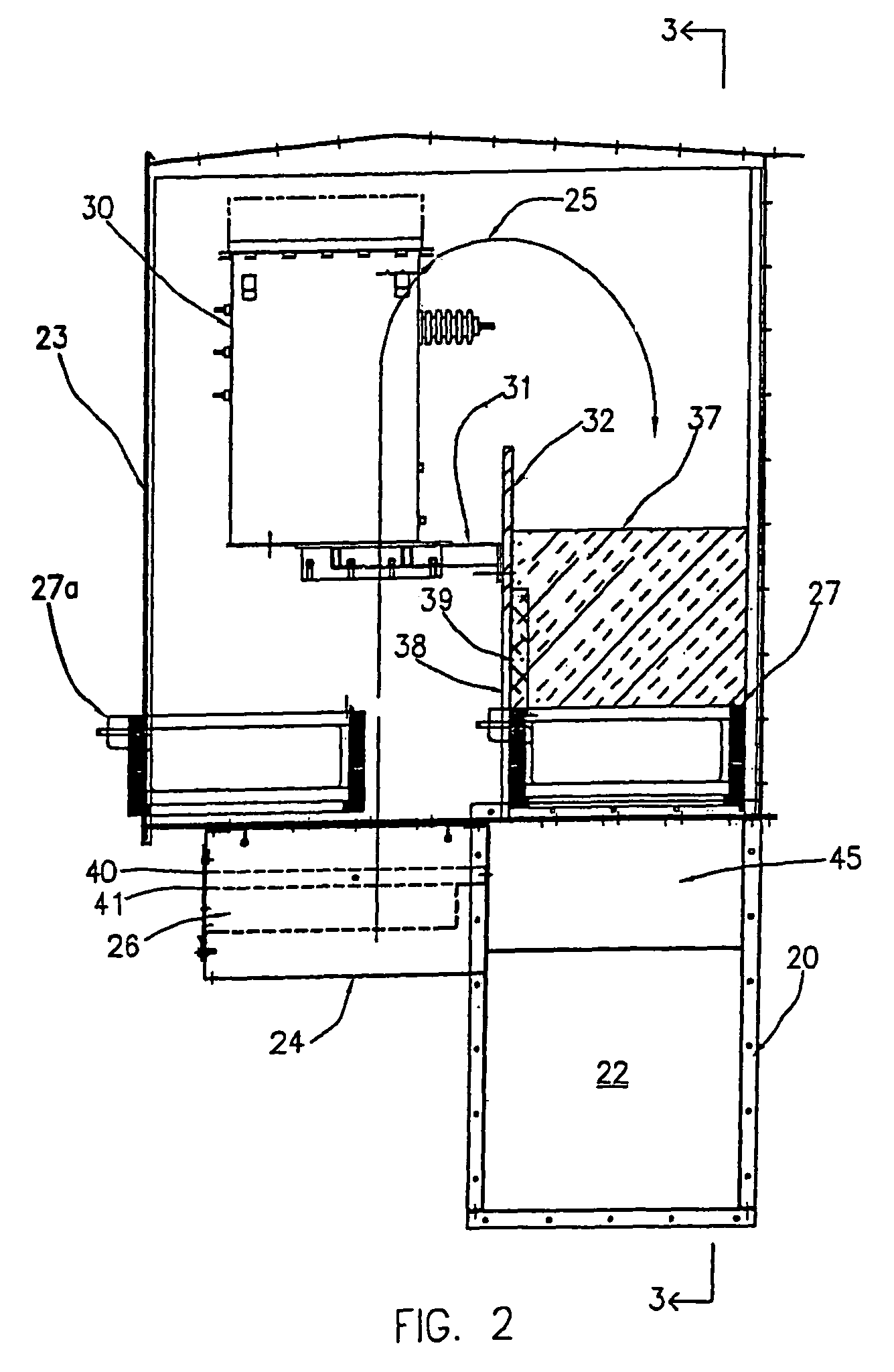Dielectric barrier discharge cell with hermetically sealed electrodes, apparatus and method for the treatment of odor and volatile organic compound contaminants in air emissions, and for purifying gases and sterilizing surfaces
a discharge cell and electrode technology, applied in plasma techniques, separation processes, energy-based chemical/physical/physico-chemical processes, etc., can solve problems such as interference with the design electrical properties, electrical short circuits in the cells of hot electrodes, and parts per billion ranges that can be offensive or exceed environmental emission limits
- Summary
- Abstract
- Description
- Claims
- Application Information
AI Technical Summary
Benefits of technology
Problems solved by technology
Method used
Image
Examples
Embodiment Construction
[0040]A preferred apparatus of the invention includes a housing that forms at least one gas flow passage therethrough and a dielectric barrier discharge NTP generation cell (DBDPGC) through which at least a portion of gas flows. The apparatus can be configured so that all of the contaminated gas to be treated flows through the DBDPGC, only a portion of the contaminated gas to be treated flows through the DBDPGC, or none of the contaminated gas to be treated flows directly through the DBDPGC, but atmospheric air flows as the gas through the DBDPGC and is then mixed with the contaminated gas to be treated to treat that gas. The gas passing through the DBDPGC is activated so that the activated gas from the DBDPGC, when mixed with gas that has not passed through the DBDPGC, treats the gas that has not passed through the DBDPGC. In instances where less than all of the contaminated gas to be treated flows through the DBDPGC, a mixing chamber is included in the apparatus to mix the gas tha...
PUM
 Login to View More
Login to View More Abstract
Description
Claims
Application Information
 Login to View More
Login to View More - R&D
- Intellectual Property
- Life Sciences
- Materials
- Tech Scout
- Unparalleled Data Quality
- Higher Quality Content
- 60% Fewer Hallucinations
Browse by: Latest US Patents, China's latest patents, Technical Efficacy Thesaurus, Application Domain, Technology Topic, Popular Technical Reports.
© 2025 PatSnap. All rights reserved.Legal|Privacy policy|Modern Slavery Act Transparency Statement|Sitemap|About US| Contact US: help@patsnap.com



